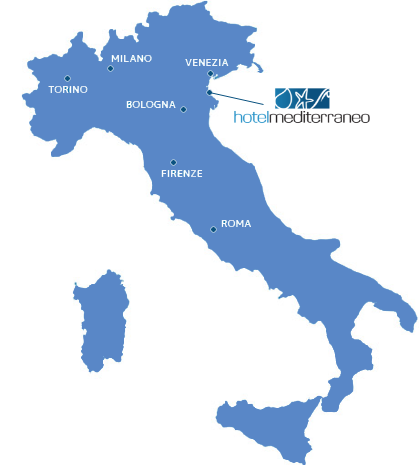Narrow streets, bridges and canals. It's no coincidence Chioggia is known as Little Venice. Needless to say, its city centre is very picturesque and romantic. It only takes a few minutes to get there from Sottomarina, walking across Union Island. The main street of Chioggia is Corso del Popolo, which is partially pedestrian only: a parade of Venetian style buildings will guide you along the discovery of the city; for a gourmet break, we suggest stopping at one of the many eateries lining the street or in the nearby alleys. At the end of Corso del Popolo, Piazza Vigo pops up with the Lion of St. Mark column: this is where the boats headed for Venice and the Lagoon islands depart.

If you want to see the real Chioggia, a visit to its fish markets is a must: cod, sardines, cuttlefish and bream, lobster and prawns; you’ll find all the oily fish and crustaceans of the northern Adriatic sea among its stalls. To see the fishermen in action, go to the Canal of San Domenico, a genuine thoroughfare of fishing boats. The most suggestive sight of Chioggia? According to us, the Canal of Vena, seen from the Vigo Bridge.
Among the narrow streets and small squares of the city centre, on hot summer days you might stumble upon some heated discussions. Have no fear: they’re simply the “baruffe” of Chioggia, small theatrical representations inspired by the namesake comedy by Carlo Goldoni. The author lived in Palazzo Poli for a few years, on the main street.
If you want to find out more about the history of Chioggia or learn a few interesting facts, we suggest a visit to four museums in particular. The first is the Torre dell’Orologio (Clock Tower), installed in the millenary bell tower of Sant’Andrea, and apparently built in 1386 - some say it’s the oldest clock in the world. Next to the cathedral, the Museo Diocesano (Diocesan Museum) with sacred art relics and historical artifacts of Chioggia from between the 8th and 20th century. In the ex-convent of San Francesco just outside the town walls, you can visit the Museo Civico (Civic Museum) dedicated to archaeology and ethnography. Last but not least, Palazzo Grassi, an 18th century Venetian residence, just a short distance from Corso del Popolo, is home to the collection of marine wildlife of the Museo "Giuseppe Olivi” (“Giuseppe Olivi” Museum”).

Lungomare Adriatico, 6 | 30015
Sottomarina di Chioggia - Venezia
VAT Number 02736200276